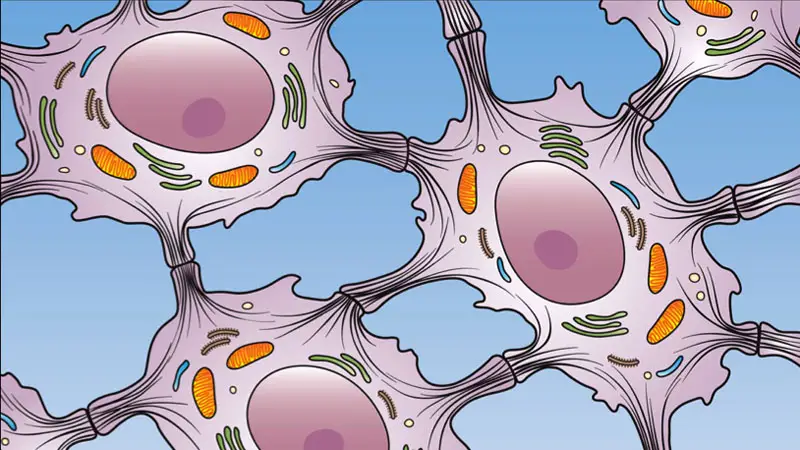Cell junctions are found in multi-cellular bodies like trees, dogs, fish and other forms of complex biological life forms. Cell junctions primarily act as communicators between cells. This communication happens through proteins known as communicating junction.
Cell junctions also act as a barrier against stress to the cell itself. In this article, we define five different types of cell junctions: Gap Junctions, Adherens Junctions, Hemisdesmosomes, Desmosomes, and Tight Junctions.
See Also: Types of Chemical Reactions
Types of Cell Junctions
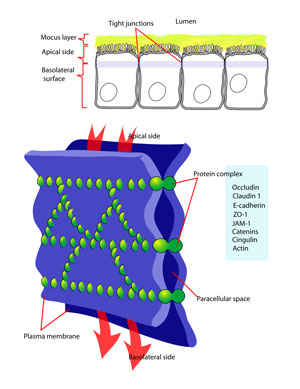 1. Tight Junction
1. Tight Junction
Among the different types of cell junctions, the Tight Junction directs the movement of solutes and water nestled between epithelia. This happens at that point where cells brush against each other.
The gap between cells is so very tight that nothing may pass through. The only way substances can travel is by passing through the cell itself.
Should the cell allow a certain amount of nutrients to pass through, it is the Tight Junction that acts as the doorway to the body of the cell. Tight Junctions also act as a link between cytoskeletons of individual cells, thus holding adjacent cells in place.
Tight Junctions can only be found in vertebrates. For invertebrates, junctions that match the functions of the Tight Junction are called Septate Junctions.
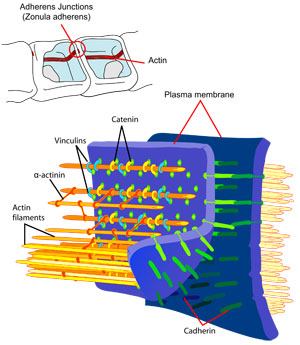 2. Adherens Junction
2. Adherens Junction
Otherwise known as Zonula Adherens, the Adherens Junction literally forms a continuous belt around a cell. The primary function of the Adherens Junction is to stick to an adjacent cell or surface. The junction is formed primarily with calcium.
In certain parts of the body, Adherens Junctions perform a very important function. They help in binding the structure of the heart, keeping the heart together even as is it expands and contracts to supply oxygen throughout our body.
Several proteins make up an Adherens Junction:
- Cadherin are floating adhesive substances located outside of the cell.
- There are anchor proteins inside the cell. They connect the cytoskeleton to Cadherin.
- The cytoskeleton of the cell itself, which has actin microfilaments.
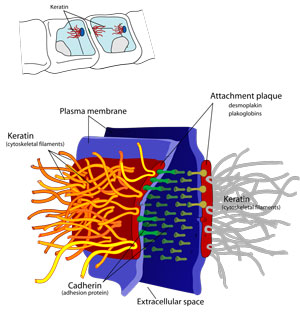 3. Desmosome
3. Desmosome
Desmosomes are similar in function to Adherens Junctions. Desmosomes are attached to the cytoskeleton of a cell via the demosplakin.
From there, the adhesion protein of the Desmosomes extends toward the cellular membrane, passes through the protective membrane, and attaches itself to another Desmosomes from another adjacent cell.
The two Desmosomes intertwine to in an S, W, or A shaped manner. In muscular tissue, Desmosomes hold muscles together.
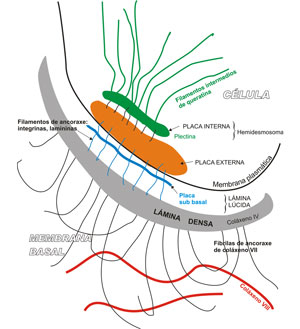 4. Hemidesmosome
4. Hemidesmosome
Hemidesmosomes are located in the basal lamina of a cell. They connect with other cells by extending filaments to reach other Hemidesmosomes of other adjacent cells.
Like Desmosomes, the Hemidesmosome acts as an anchor between adjacent cells.
The main difference lies in the fact that the Hemidesmosome is anchored to the basal lamina of the cell, while the Desmosome is anchored to the cytoskeleton of the cell.
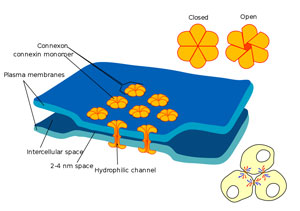 5. Gap Junction
5. Gap Junction
Gap Junctions are specialized connections between cells. The presence of the Gap Junction directly connects the cytoplasm of adjacent cells. Their primary function is to allow the regulated passage of electrical impulses, molecules and ions from one cell to another.
This communication is very important as Gap Junctions allow for complex functions to happen. For example, Gap Junctions perform a necessary function for the development of organs, embryos, and tissues.
In the heart, the electrical impulses that order the muscles to contract pass through Gap Junctions. The signal for cellular death also passes through the Gap Junction.
Sometimes, cells must die in order for tissue to evolve into its primary form and purpose. Gap Junctions also transmit “orders” for nearby and surrounding, healthy cells, to die, if and when a diseased cell is found to be dying.
Gap Junction type cells are found in almost every kind of tissue within the body. The only exceptions to this are mobile cells such as erythrocytes, and fully matured skeletal muscle. Gap Junctions are not found in life forms like slime molds, sponges, and other simple organisms.
Conclusion
They may be the smallest of particles within our bodies, but junctions are also the particles that compose and allow our bodies to function. The human body is a whole new universe open to exploration.
The more micro-particles we can see, the better we can understand some of life’s secrets. For now, microscopic cellular structures are slowly giving up their secrets. The different types of cell junctions are some of those things that we are still learning about.

